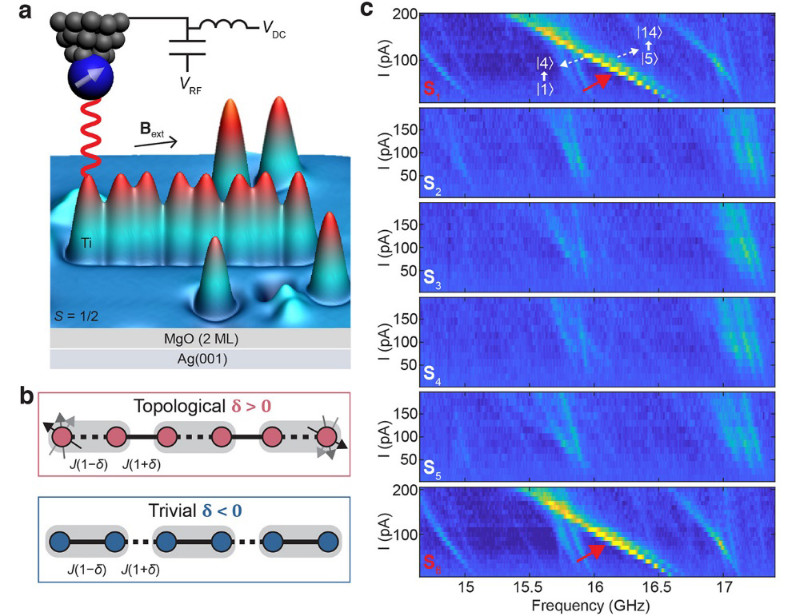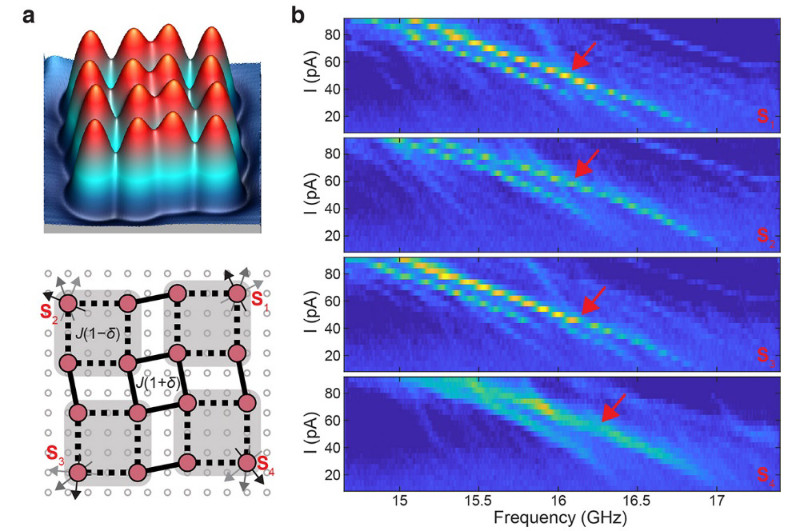Scientists Craft Topological Quantum Magnets with "Atomic Building Blocks"
August 30, 2024 -- A research team led by Prof. YANG Kai at the Institute of Physics (IOP) of the Chinese Academy of Sciences, in collaboration with Prof. LADO Jose from Aalto University, has developed an important bottom-up approach to simulate quantum many-body topological phases at the atomic scale.
They used a special microscope to create tiny magnetic structures called topological quantum magnets, which have unique and stable quantum properties.
Topological states of matter are very resistant to disturbances and could lead to breakthroughs in technologies like ultra-efficient electronics and quantum computing. Scientists are exploring these states using quantum simulations, but figuring out how to create and understand more complex, interacting many-body topological states is still a big challenge.
Using a custom-built advanced microscope known as Electron Spin Resonance-Scanning Tunnelling Microscope (ESR-STM), YANG and his team were able to create and measure these topological quantum magnets at atomic level with incredible precision—measuring energy levels with an accuracy better than 100 nano-electronvolts (neV).
This work offers a new solid-state platform for deeper exploration of many-body topological quantum states.
To build these topological quantum magnets with special geometric structures, extremely tiny single-atom “building blocks" must be connected in a very precise manner. The IOP team precisely controlled the relative positions of these "atomic building blocks" using an ultra-sharp needle tip.
They arranged individual titanium atoms into desired geometrical structures to create topological structures (Figures 1 and 2) and constructed several types of spin lattices, including dimerized one-dimensional spin-1/2 antiferromagnetic Heisenberg chains and a dimerized two-dimensional spin-1/2 antiferromagnetic Heisenberg array.
The dimerized spin-1/2 antiferromagnetic Heisenberg model can be considered as a many-body analog of Su-Schrieffer-Heeger model, and is theoretically predicted to exhibit many-body topological modes.
This topological state can be adiabatically connected to the Haldane phase of a spin-1 antiferromagnetic Heisenberg chain. The IOP team constructed dimerized spin-1/2 chains with both topological and topologically trivial configurations (Figure 1).
For the topological configuration, they observed the topological edge states with nearly four-fold degeneracy, whereas the ground state of the trivial spin chain is a spin singlet.
The experiment also revealed that topological edge states exhibit longer quantum coherence times compared to single spins, demonstrating the robustness of topological states.
Furthermore, they constructed a two-dimensional spin-1/2 antiferromagnetic Heisenberg spin array and observed higher-order topological corner states (Figure 2).
This study entitled "Construction of topological quantum magnets from atomic spins on surfaces" was published in Nature Nanotechnology.
This work was supported by the National Key R&D Program of China, the Beijing Natural Science Foundation, the National Natural Science Foundation of China and the Chinese Academy of Sciences.






































